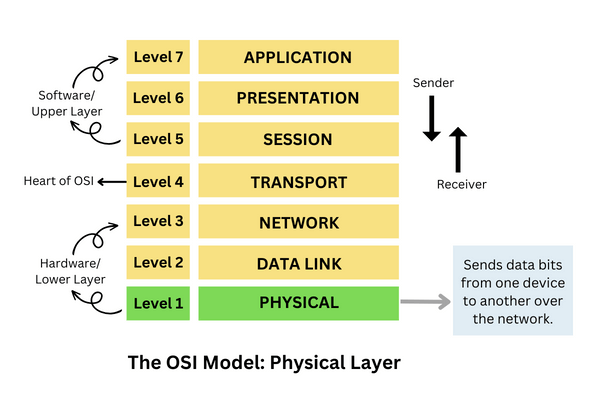
Functions of the Physical Layer in the OSI Reference Model
Introduction to Physical Layer
In the vast and complex world of computer networking, the OSI (Open Systems Interconnection) Reference Model serves as a conceptual framework to understand the various layers involved in data communication. The Physical layer, which is the lowest layer in the OSI model, plays a crucial role in ensuring that data can be reliably transmitted across different network mediums. In this blog post, we will dive deep into the functions of the Physical layer, shedding light on its significance in establishing a seamless communication pathway. Let’s explore the key functions of this fundamental layer.
Transmission of Raw Data
The primary function of the Physical layer is to transmit raw binary data in the form of electrical signals or optical pulses over the physical network medium. It establishes the physical connection between devices, enabling them to communicate. The layer defines the hardware specifications, such as cables, connectors, and the physical characteristics of the medium, like voltage levels, data rates, and signal modulation techniques.
Bit Synchronization
Another vital function of the Physical layer is to ensure proper bit synchronization. It regulates the timing of data transmission, making sure that both the sender and receiver are in sync regarding when bits are transmitted. Accurate bit synchronization is crucial for error-free data transfer and effective communication between devices.
Data Encoding and Modulation
Before transmission, data needs to be converted into a suitable format that can be transmitted over the chosen physical medium. The Physical layer is responsible for data encoding and modulation, where digital data is transformed into analog signals or light pulses compatible with the medium. Different encoding techniques, such as Manchester encoding or Differential Manchester encoding, are used to achieve this conversion.
Signal Transmission and Reception
The Physical layer manages the process of signal transmission from the sender and signal reception at the receiver. It determines how the data is transmitted, whether it is sent as a continuous stream or in discrete chunks, and how signals are interpreted by the receiving device. The layer also deals with signal attenuation, noise, and interference, striving to maintain signal integrity and reliability.
Physical Topology
In a network, devices are interconnected in specific patterns called topologies. The Physical layer defines the physical topology, which refers to the actual arrangement of devices and the medium used for interconnection. Common physical topologies include bus, star, ring, and mesh. Each topology has its advantages and disadvantages, affecting factors such as scalability, fault tolerance, and ease of maintenance.
Medium Access Control
For networks with shared mediums (e.g., Ethernet), the Physical layer works in tandem with the Data Link layer to manage access to the medium. It defines protocols and mechanisms for devices to share the medium efficiently. This process includes collision detection and resolution to avoid data collisions when multiple devices attempt to transmit simultaneously.
Conclusion
The Physical layer of the OSI Reference Model is the foundation upon which network communication is built. By handling the fundamental aspects of data transmission and reception, bit synchronization, data encoding, and physical topologies, this layer ensures that data can traverse the network securely and reliably. Understanding the functions of the Physical layer helps network engineers design and troubleshoot networks more effectively, leading to smoother data communication and improved overall network performance.
Incorporating the Physical layer’s principles in network planning and implementation enhances the robustness and efficiency of the entire communication process. As technology evolves, the Physical layer continues to play a vital role in facilitating seamless connectivity, making it an indispensable component in the world of computer networking.